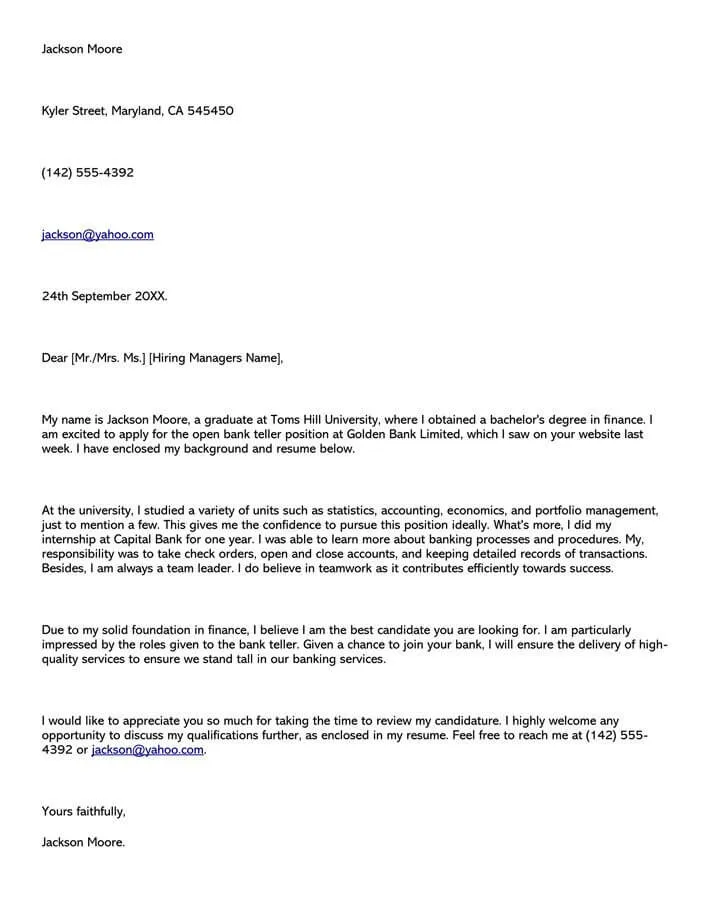What is a Bank Cover Letter
A bank cover letter is a crucial document that accompanies your resume when applying for a job in the banking industry. It serves as your personal introduction, allowing you to highlight your qualifications, skills, and experiences in a way that a resume alone cannot. It provides an opportunity to showcase your personality, enthusiasm, and specific interest in the role and the bank itself. Crafting a compelling cover letter is essential to capture the attention of hiring managers and increase your chances of securing an interview. It is more than just a formality; it is a powerful tool to make a positive first impression and set you apart from other candidates.
The Importance of a Bank Cover Letter
The importance of a bank cover letter cannot be overstated. In the competitive banking sector, a well-written cover letter can make the difference between getting noticed and being overlooked. It allows you to tailor your application to the specific requirements of the job and demonstrate a genuine interest in the bank. It provides a platform to connect your skills and experiences to the specific needs of the role. A strong cover letter shows that you have taken the time to research the bank, understand its values, and explain how your qualifications align with its goals. Moreover, it gives you an opportunity to address any potential gaps in your resume or explain career transitions, which can be very important.
Key Elements of a Bank Cover Letter
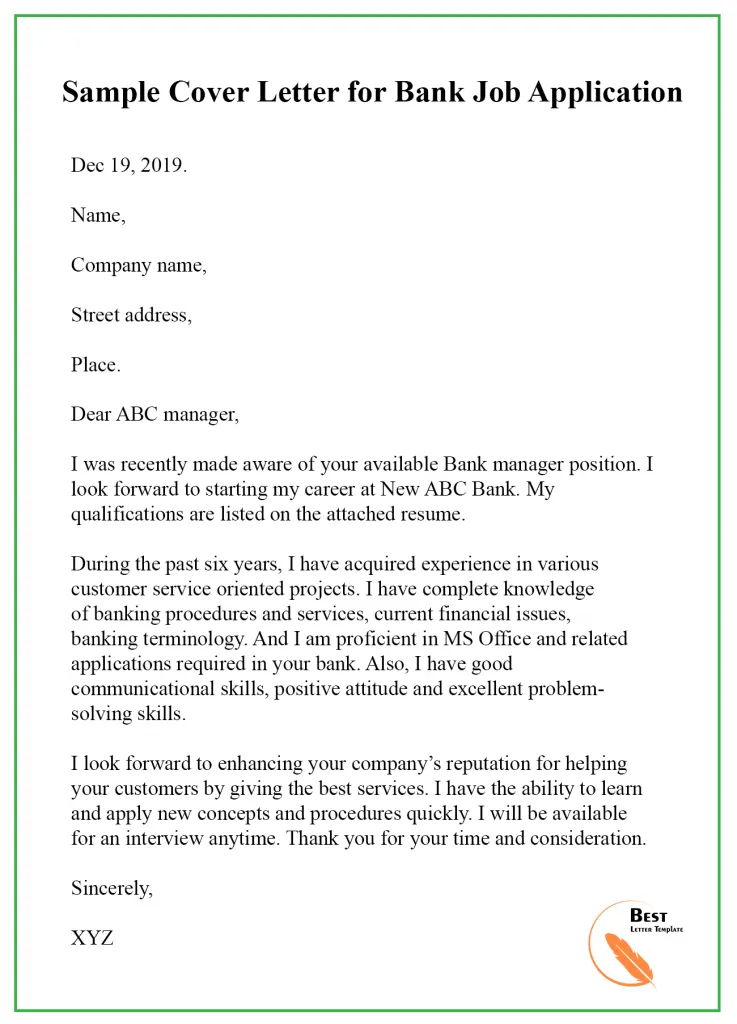
Contact Information and Date
Start your cover letter with your contact information, including your name, address, phone number, and email address. This information should be at the top left of the letter. On the right side, include the date of the application. This section is essential for the recruiter to easily reach you. Ensure your contact information is accurate and up-to-date. Using a professional-sounding email address is also recommended. This section is often overlooked, but it’s a simple yet critical component of a professional and effective cover letter, setting the tone for the rest of the document. It allows the hiring manager to quickly identify and contact you for interviews.
Recipient’s Information
Next, include the recipient’s information, typically the hiring manager’s name, title, and the bank’s address. Research the hiring manager’s name on LinkedIn or the company website to personalize the letter. Addressing the letter to a specific person demonstrates that you have put in the extra effort. If you cannot find the hiring manager’s name, use a general salutation such as “Dear Hiring Manager.” Always double-check the accuracy of the recipient’s information to avoid errors that could negatively impact your application. Personalizing this section makes your application feel more targeted and shows your genuine interest.
Opening Paragraph
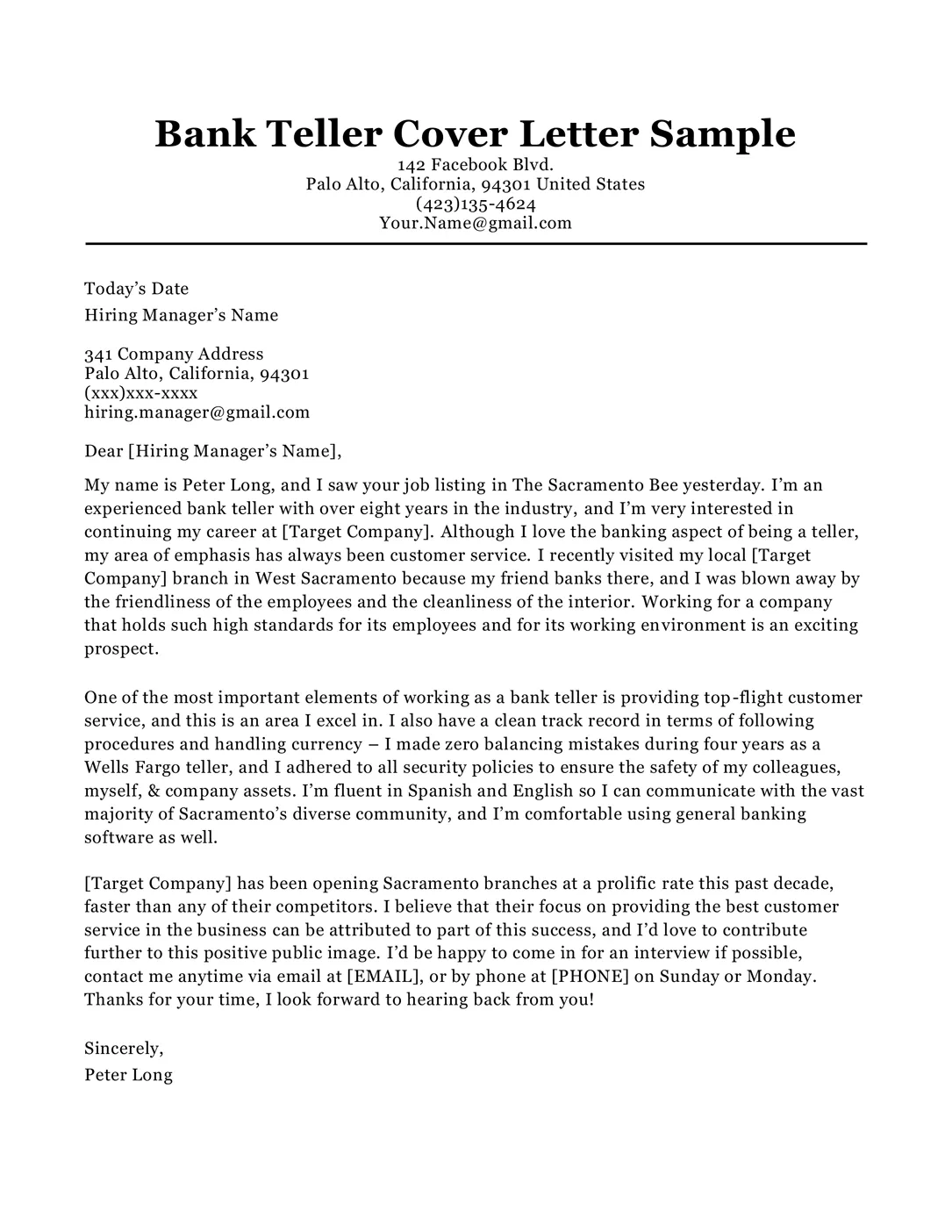
The opening paragraph is your opportunity to grab the hiring manager’s attention. State the position you are applying for and where you found the job posting. Briefly mention your enthusiasm for the role and the bank. Consider including a compelling statement about why you are interested in the position and what value you can bring to the organization. Keep it concise and impactful, aiming to create an immediate positive impression. A strong opening paragraph sets the stage for the rest of the letter and encourages the reader to continue. Clearly stating your intention and expressing your excitement are key elements.
Body Paragraphs
The body paragraphs are the core of your cover letter. This is where you showcase your skills, experience, and qualifications. Focus on demonstrating how your abilities align with the job requirements. Provide specific examples that support your claims, using the STAR method (Situation, Task, Action, Result) to structure your responses. Highlight your achievements and quantify your accomplishments whenever possible. Tailor your responses to the specific requirements outlined in the job description. These paragraphs allow you to connect your past experiences directly to the needs of the bank. The goal is to convince the hiring manager that you are the perfect fit for the role.
Highlight Relevant Skills and Experience
Carefully review the job description and identify the key skills and experience the employer is seeking. Address these requirements directly in your body paragraphs. Provide specific examples of how you have demonstrated these skills in previous roles. If the job requires customer service skills, provide examples of how you have resolved customer issues or exceeded customer expectations. If the job requires analytical skills, describe how you have used data to make informed decisions. Highlight any relevant certifications or training you have completed. By highlighting the relevant skills and experience, you make a direct connection between your qualifications and the needs of the bank, making you a more appealing candidate.
Quantify Achievements
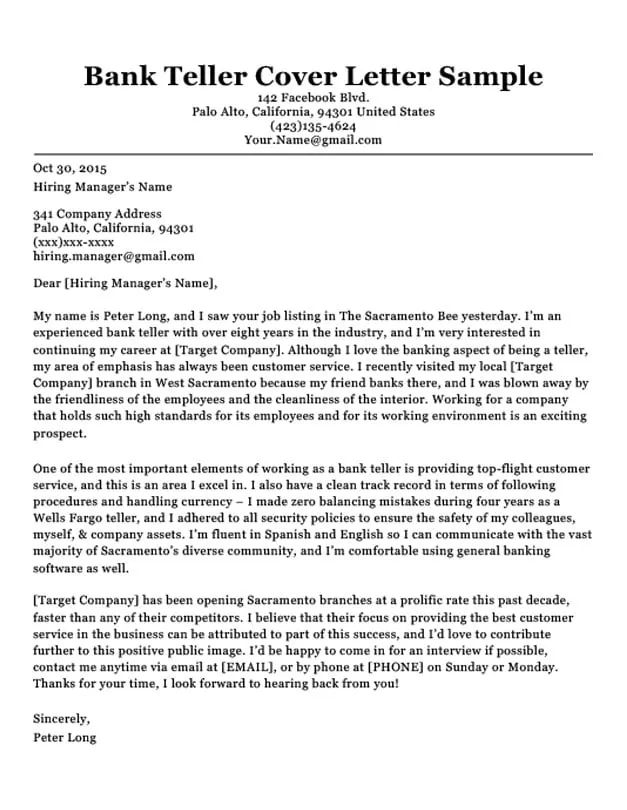
Use numbers and data to quantify your achievements. For example, instead of saying “Improved customer satisfaction,” say “Improved customer satisfaction scores by 15% within six months.” Quantifying your achievements provides concrete evidence of your capabilities and makes your application more persuasive. Use metrics to show the impact you have made in previous roles. This demonstrates your ability to deliver results and adds credibility to your claims. This method makes it easy for the hiring manager to understand your value.
Showcase Your Knowledge of the Bank
Demonstrate your knowledge of the bank by mentioning specific initiatives, values, or recent news about the institution. Show that you have done your research and are genuinely interested in the bank’s mission and culture. Tailor your cover letter to the bank’s specific values and mission. Refer to the bank’s website, social media, and recent press releases to gather information. This shows that you have gone the extra mile and are not just sending out a generic cover letter. Displaying your knowledge makes you appear more engaged and serious about the role.
Closing Paragraph
In the closing paragraph, reiterate your interest in the position and the bank. Thank the hiring manager for their time and consideration. Express your enthusiasm for the opportunity to discuss your qualifications further. Keep the closing paragraph concise and professional. This paragraph summarizes your key points and leaves a lasting impression on the reader. It should be clear, enthusiastic, and memorable.
Call to Action

Include a clear call to action, such as requesting an interview. State that you are available for an interview at their earliest convenience. Provide your contact information once again. This proactive approach shows your eagerness and makes it easy for the hiring manager to take the next step. Providing a clear call to action increases the chances of a response and moves your application forward.
Formal Closing and Signature
Use a professional closing such as “Sincerely,” “Best regards,” or “Thank you.” Leave space for your signature, and type your full name below it. If submitting the cover letter electronically, you may use a digital signature or simply type your name. This final touch adds professionalism and formality to your cover letter. The formal closing and signature complete the professional image and reinforce the importance of the information presented. Always ensure the closing matches the tone of your letter.
Formatting and Design Tips
Choose a Professional Font
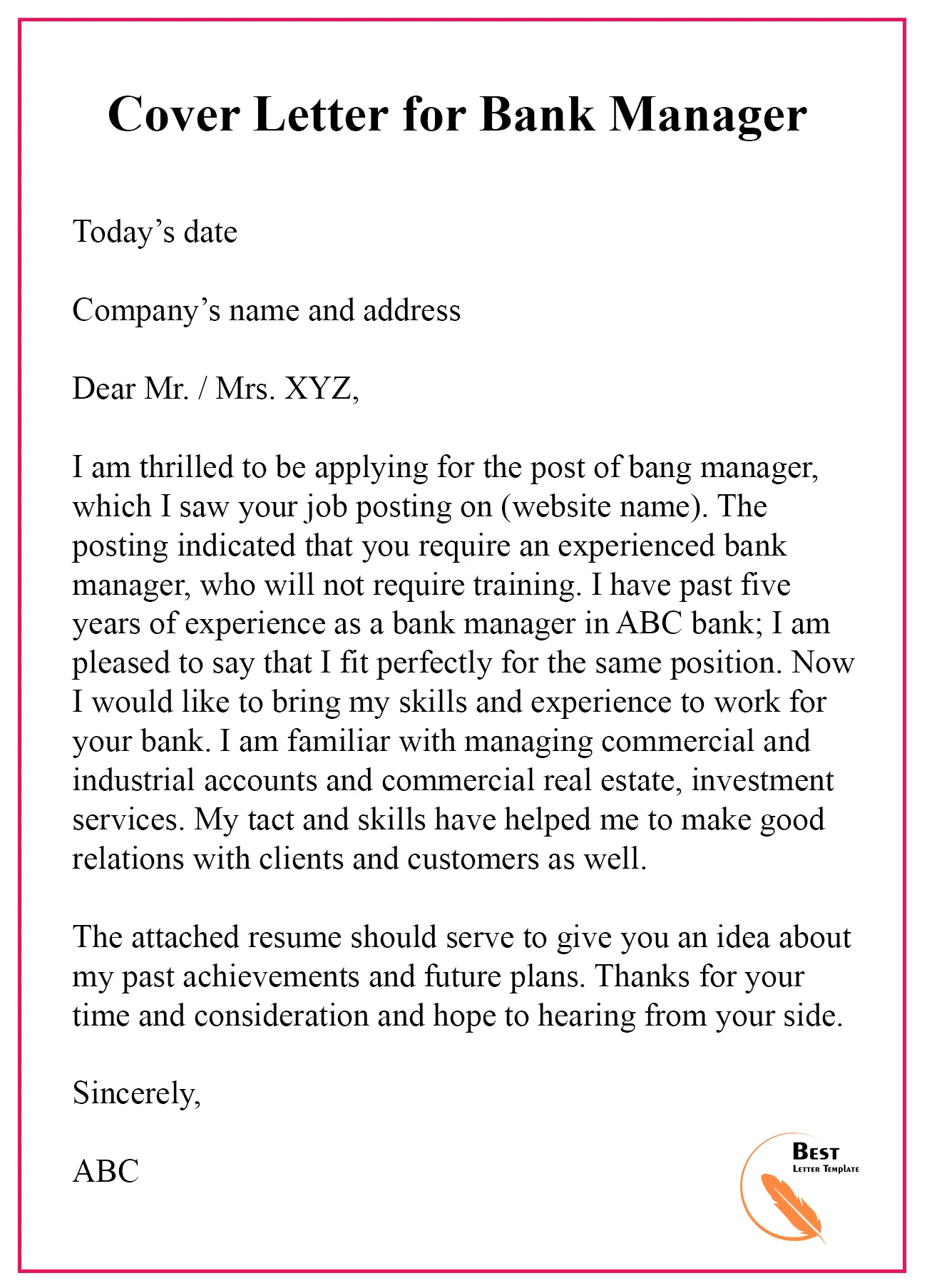
Select a professional and readable font, such as Times New Roman, Arial, or Calibri. Use a font size between 10 and 12 points. Maintain consistent formatting throughout the document. The font you choose reflects your attention to detail. Avoid using overly ornate or casual fonts. The goal is to create a clean, easy-to-read document. Consistent font and size contribute to a polished, professional appearance. Ensure the font is easy on the eyes and accessible.
Use Clear and Concise Language
Use clear, concise, and direct language. Avoid jargon, clichés, and overly complex sentences. Use active voice whenever possible. Keep your paragraphs short and to the point. Brevity is key in a cover letter. Make sure your language is easy to understand. The aim is to communicate your skills and experiences effectively. Eliminate any unnecessary words or phrases. Keep your sentences focused and impactful. The reader should grasp the content quickly.
Proofread Carefully
Proofread your cover letter multiple times for any typos, grammatical errors, or spelling mistakes. Ask a friend or family member to review your letter as well. Errors can create a negative impression and undermine your credibility. Attention to detail is important in the banking industry. Correct any errors before submitting your application. Ensure your cover letter is polished and error-free. Proofreading is an essential step that should not be overlooked.
Bank Cover Letter Samples for Specific Roles
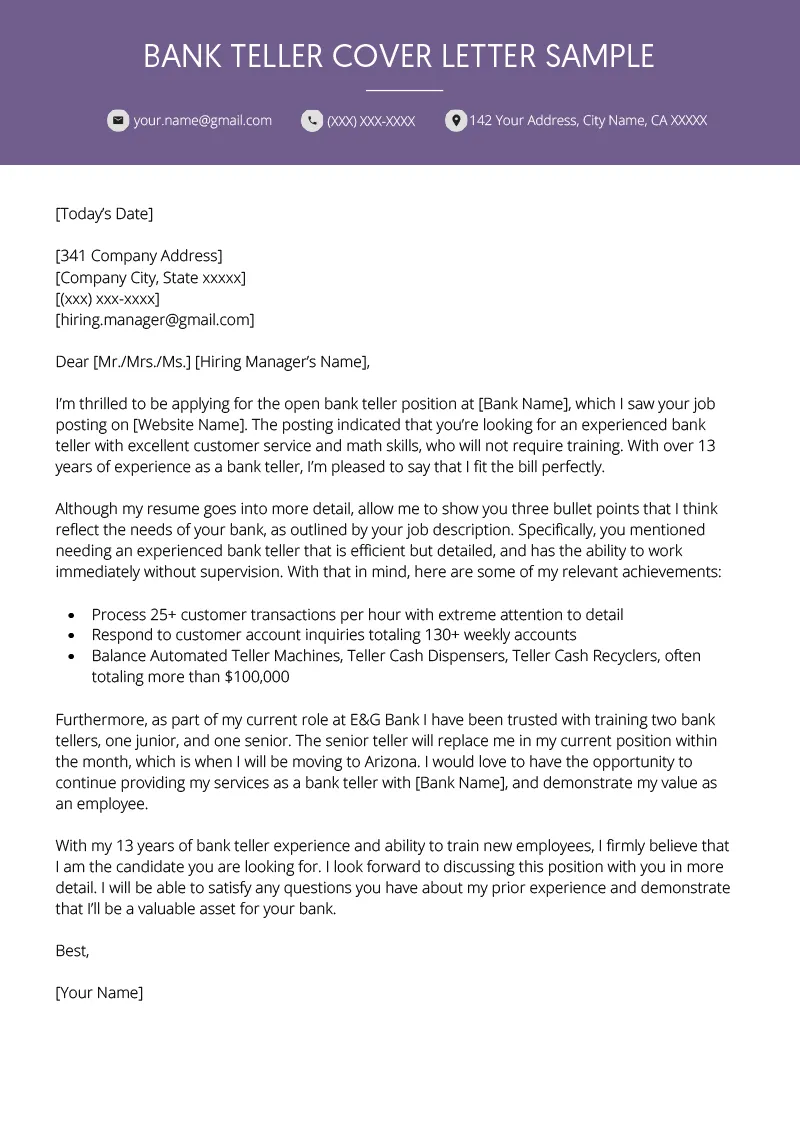
Bank Teller Cover Letter
A bank teller cover letter should emphasize customer service skills, cash handling experience, and attention to detail. Highlight any experience with transactions, balancing accounts, and resolving customer inquiries. Mention your ability to work in a fast-paced environment and your commitment to accuracy. Include examples of your positive attitude, communication skills, and ability to build rapport with customers. Tailor your letter to match the specific requirements of the teller position. The cover letter should present you as someone who is reliable, friendly, and good with people. This example will help you showcase your customer service skills.
Loan Officer Cover Letter
A loan officer cover letter should showcase your knowledge of lending practices, credit analysis, and risk assessment. Highlight your experience with loan origination, processing, and closing. Demonstrate your ability to evaluate financial statements and assess creditworthiness. Include any relevant certifications, such as a Certified Loan Officer (CLO) designation. Showcase your sales skills and your ability to build strong relationships with clients. Emphasize your understanding of relevant regulations and your ability to manage loan portfolios effectively. This example should highlight your financial expertise.
Bank Manager Cover Letter
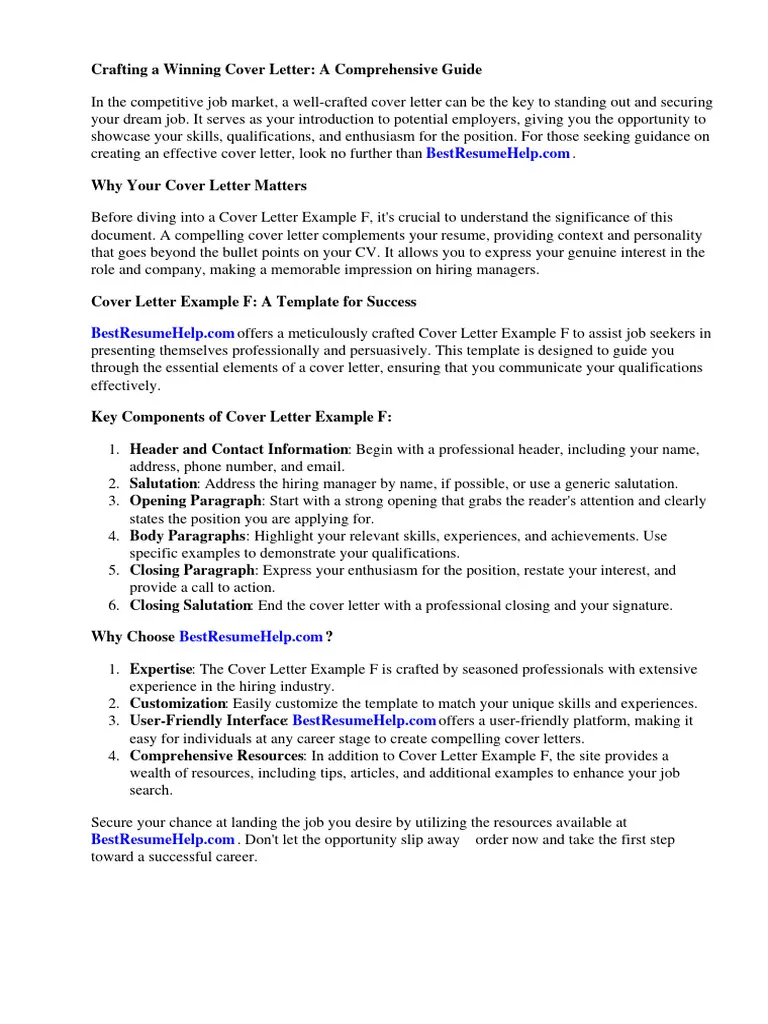
A bank manager cover letter should emphasize leadership skills, experience in managing a team, and knowledge of banking operations. Highlight your ability to drive sales, improve customer service, and manage operational efficiency. Showcase your skills in financial analysis, budgeting, and regulatory compliance. Mention your experience in training and developing employees. Demonstrate your understanding of the bank’s goals and your ability to contribute to its success. Provide examples of your leadership abilities and accomplishments. This example needs to display your management and leadership expertise.
Common Mistakes to Avoid
Generic Cover Letters
Avoid sending a generic cover letter. Always tailor your cover letter to the specific job and the bank. Research the bank and the role, and highlight how your skills and experience align with the job requirements. Showing that you’ve put in the extra effort will significantly increase your chances of success. A generic cover letter will make you look like you didn’t make an effort. Tailor the letter to the bank’s specific needs. Personalize your application to show interest and commitment.
Typos and Grammatical Errors
Typos and grammatical errors can damage your credibility. Always proofread your cover letter carefully before submitting it. Ask someone else to review it as well. These errors create a negative first impression. Double-check all spelling and grammar. Errors show a lack of attention to detail. This demonstrates a lack of professionalism and could cost you the job.
Focusing Too Much on Yourself
While you need to highlight your skills and experiences, avoid making your cover letter all about you. Focus on how you can contribute to the bank and what value you can bring to the role. Frame your accomplishments in terms of how they benefited your previous employers. Instead of simply listing your responsibilities, explain how your actions helped your past employers. Ensure you highlight how your skills align with the bank’s needs. Your letter should show that you are a solution to their needs.
Tips for a Successful Cover Letter
To write a successful bank cover letter, start by researching the bank and the specific role. Tailor your cover letter to the job requirements and the bank’s values. Highlight relevant skills and experiences, quantifying your achievements whenever possible. Use clear, concise language and proofread carefully for any errors. Demonstrate your enthusiasm for the role and the bank. Follow these tips and your letter should be one that makes an impression. Make a strong first impression with the right tone, and formatting, and you will get noticed.
